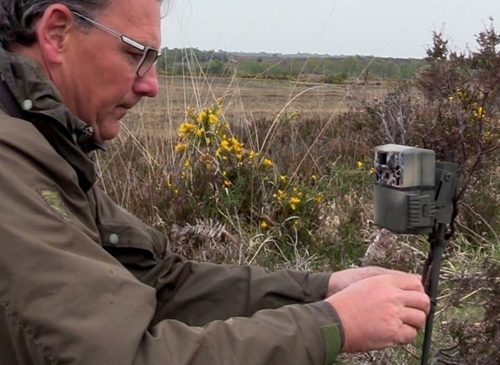
Will you help us to prove what’s driving nest losses?
By Dr Andrew Hoodless, GWCT Director of Research
You and I both know that many ground-nesting birds are in desperate need of help.
If you look at the red list of Birds of Conservation Concern, it’s there for all to see. Lapwing, curlew, ringed plover and skylark are all red-listed, as are grey partridge and woodcock. Speak to those on the ground and they’ll have an idea of what’s fuelling their declines, but we need proof to make a difference.
To show what’s really affecting these birds, I need your help. To capture what’s causing these declines, whether it’s badgers, foxes, livestock, crows, human disturbance or otherwise, we need cameras. Lots of cameras. Trail cameras show us exactly what is predating nests and provide vital evidence we can share with policymakers, landowners, conservation bodies, and the government.
Here’s how you can help today:
- £50 buys us a lock and SD card for a trail camera, keeping our findings secure
- £150 buys one trail camera and monitoring of a wader nest
- £500 buys three days of ecologist time for fieldwork, data analysis, and reporting
DONATE HERE →
Using trail cameras, we can see what is causing nest losses
It’s straightforward for our scientists, advisors, and the land managers we work with to assess if they have the right habitat and food provision to support ground-nesting birds. The real struggle comes with understanding what is causing nest losses. We could never afford to monitor these nests in person, waiting for a predator to strike.
That’s why trail cameras are such an effective tool.
You can help us show policymakers what’s really happening to our waders
Without using trail cameras, it’s incredibly hard to know what’s happening to these nests, and even harder to prove it to government and bodies such as Natural England, Natural Resources Wales and NatureScot. For many of our research staff, these cameras are like additional, computerised fieldworkers, showing us what happens when we’re not around.
Sadly, the cameras aren’t cheap. Each one costs £150, plus an extra £50 for a lock and SD card for each camera. When we’re monitoring as many as 100 nests across the country at in the nesting season, that soon adds up. That’s why I’m writing to you today.
We need as many cameras as possible to be able to catch predation incidents and report the findings.
To reverse wader declines and inform the government of what is needed, we need evidence. To document the extent of predation and key predators, I need your help.
DONATE HERE →
Capturing the evidence for change
To give you an example, we suspect that ringed plover, a red-listed species, is suffering a high level of nest predation by lesser black-backed gulls. These gulls can no longer be controlled under the General Licencing system. Photographic evidence is taken much more seriously than anecdotes about particular forms of predation.
The cameras you help us to buy will determine any increase in nest survival outcomes where predation management is in place and aid the development of other solutions such as nest cages.
We saw during the General Licence situation in 2019, that hard evidence of predation can make a real difference to policy decisions, so it’s vital that we gather as much as we can.
You can help us to do so. Please give what you can: